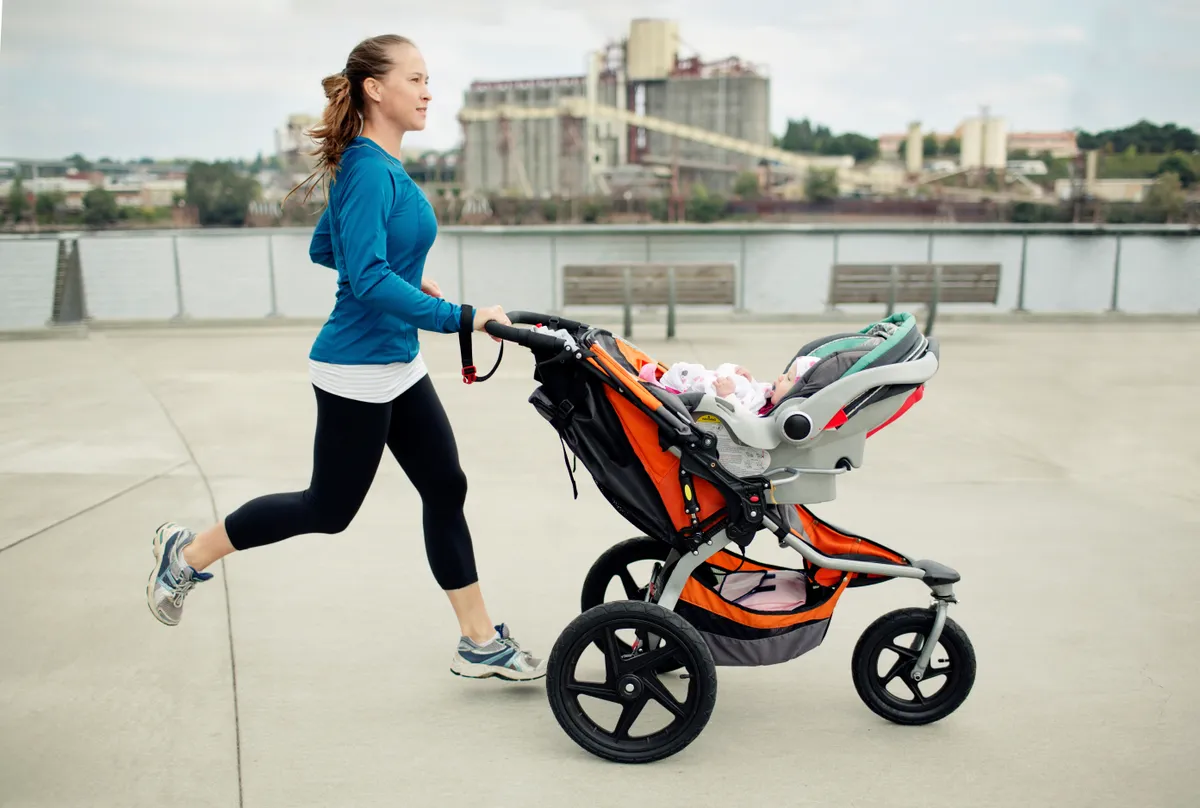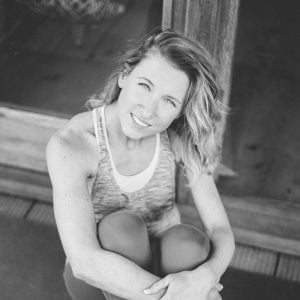If all you’ve known is to get up and go when it comes to fitness, suddenly having a baby dependent on you can take some getting used to.
Breastfeeding adds another level of complication, whether it’s boob-holding in energetic moves, grappling with escaping and absorbed breast pads, expressing or feeding before/during/after exercise, or hoisting those uncomfortable sports bras on and off at a moment’s notice.
I recall many times sitting outside a crèche with other regular gym-goers averting glances as they passed me by. On the flip side, the unfazed might just choose this moment to strike up a conversation.
But I’ll never forget the time one school dad sat down to chat to me while my youngest decided to come off the boob mid-feed. Cue frantic, yet failed, cover up of massive milk spray in his direction!
In my job I regularly answer questions from new mothers on what they can and can’t do when it comes to exercise while breastfeeding. Embarking on exercise when your mammaries have taken on a whole new shape, size and job description does require some careful consideration and planning, but it is more than achievable.
So let’s address some of those all-important questions from nursing mamas…
Is it still worth pursuing exercise while breastfeeding?
Definitely. It’s a well-known fact that exercise not only improves a mother’s health physically but also mentally. It can help her to get into a healthy routine, improve postpartum recovery, help to build strength and cardiovascular fitness, and also help to regulate hormones.
- Tummy gap: what is it and how can you fix it?
- How do female hormones affect exercise?
- Why good energy balance is vital for female triathletes
Getting enough exercise post-baby may even help prevent postpartum depression, which impacts one in 10 mothers according to the NHS UK website.
Exercising after having a baby also enhances baby bonding, stimulates the release of endorphins (the feel-good hormone), increases energy levels, and raises the body’s level of prolactin, which is the hormone responsible for the production of breast milk.
Exercise may also give you a better night’s sleep… unfortuately it can’t guarantee the same for your baby!
- Struggle to sleep after exercise?
- What's the best time to train according to your circadian rhythm and sleep pattern?
Will doing exercise affect my milk supply?
Research has shown that exercising to a moderate level (50-75% intensity) has no effect on quality or supply of milk or on the baby’s growth. However, if you exercise to exhaustion, there may be a short-term effect on increased lactic acid in the milk and compromised immunity.
Will my baby accept my milk after exercising?
Recent studies have shown no change in an infant accepting milk an hour after exercise, even if they had been exercising more intensely. However, there is some anecdotal evidence to suggest that babies might object to the salty taste of sweat on their mother’s skin and breast.
If this happens, try to express a little milk (3-5ml from each breast) before feeding and let the lactic acid subside by waiting half an hour if it’s been a more grueling workout.
How long should I be working out for?
Whatever the type and the duration of the exercise, I’d advise expressing or nursing beforehand. If you can introduce the baby to a bottle it does allow that freedom and flexibility so that someone else can feed them.
This still may mean you’ll need to express to relieve your breasts, so if you’re planning to be away a while bring a breast pump with you and invest in some decent breast pads.
If you’re doing an event or race and your baby is coming with you, nurse before the start. You can even nurse during longer events like British ultra runner Sophie Power did at the Ultra Train Mont Blanc in September 2018.
Her husband met her at every aid station with a breast pump which he would then take back to feed their three-month-old son.

What type of exercise should I be doing?
Once given the clearance by the GP, I recommend clients ease back into exercise slowly but surely, paying attention to how they feel physically. Take time to build back the level of fitness, whether that’s speed, distance or amount of weight you can lift.
Start out with some exercises that are easy to do at home while the baby’s napping, or grab the buggy and go for a powered stroll/light jog around the park so the baby can sleep while you work up a sweat.
I usually start postnatal clients with low-impact and low-resistance moves focusing on pelvic floor and core work and then slowly build from there.
Here are some recommended exercises: postpartum yoga; pilates; barre; brisk walking; swimming and water aerobics; cycling; light weight training; local mum & baby exercise groups.
Aim for 45-60mins of moderate aerobic exercise 2-3 times per week and two resistance training workouts per week.
What should I be eating?
You can burn a considerable amount of calories while breastfeeding (anywhere between 380 and 600 a day), so it’s important to replace those calories and even more important if you’re burning off extra calories with a workout.
It may also be harder to produce breast milk without a sufficient intake of calories. When you’re breastfeeding, you tend to have a higher craving for sugar and carbs, but it’s always a good idea to stick to a clean diet for the health of you and the baby.
Try to include high-protein foods such as meat, poultry, fish, eggs, dairy, beans, nuts and seeds 2-3 times a day. Eat three servings of vegetables, including dark green and yellow vegetables per day, and two servings of fruit per day if possible.
- What's better for you: meat or vegetable protein?
- Protein: how much do you need?
- The best sources of protein for vegan and vegetarian triathletes
Also try to include whole grains such as whole wheat breads, pasta, cereal and oats in your daily diet. If you’re not a meat eater, make sure you eat other sources of iron and zinc such as beans, dried fruit, nuts, seeds and dairy.
If you’re vegan you’ll probably need a B12 supplement so the baby doesn’t develop a B12 deficiency. Drink lots of water, too.
It’s quite common to feel more thirsty than usual as you’re losing liquids, so make sure to have a large bottle nearby and keep topping up to stay hydrated and avoid any impact on milk production.
Takeaway Tips
- During the first few weeks after childbirth, get as much rest as possible and establish your breast milk supply.
- Invest in a good sports bra that’s supportive enough that you don’t feel uncomfortable but not so tight that it may cause a blocked duct (mastitis). Try to find one with adjustable straps, nursing clasps or easy-access openings and take the bra off after you’ve finished working out.
- If you regularly lift weights or do other exercises involving repetitive arm or upper-body movement and you develop mastitis, limit this type of exercise before slowly starting back up.
- If, at any point in your workout, you start to feel pain or experience palpitations, dizziness, shortness of breath, or an increase in vaginal bleeding stop exercising immediately and speak to your GP or health visitor.
- Pay attention to joint pain or overly stretched or tight muscles, as this might be worth assessing before doing any exercise.
- If you experience abdominal pain, a bulging/doming effect in the centre of your abdominals or heaviness in your pelvis, stop exercising and talk to your GP or health visitor.
- Be kind to yourselves and your bodies. No matter how out of shape or slow you may feel, know that you’re doing an amazing job by keeping your baby happy and fed (however you choose to feed them), setting a positive example for them, while working on a happier healthier you.
Top image credit: Getty Images
For more from Lauren, visit mumfitwonder.com
